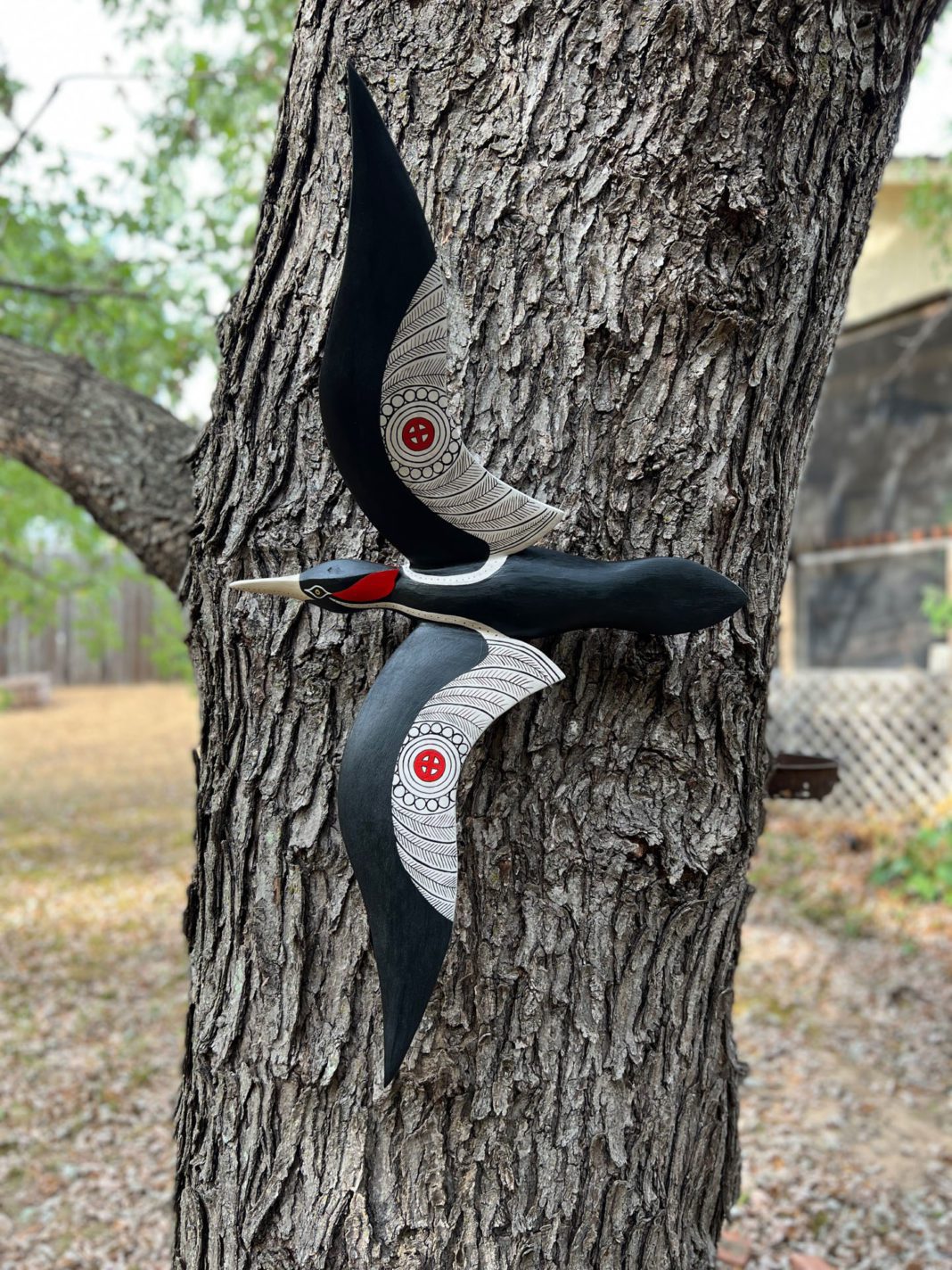The woodpecker is rich with symbolism for the Chickasaw Nation and a variety of other Native American tribes. When Ada artist Lokosh (Joshua D. Hinson, Ph.D.) paints and carves likenesses of the ivory-billed woodpecker, which is critically endangered or possibly extinct, he does so with a hope that the bird “still exists in the deep Louisiana swamps.”
In September 2021, the U.S. Fish and Wildlife Service included the ivory-billed woodpecker on a list of 23 plant and animal species to be declared extinct. But following what it called “substantial disagreement among experts regarding the status of the species,” the FWS announced in July a six-month extension and re-opened the comment period.
The ivory-billed woodpecker, also known as the “Lord God Bird” because of the reaction it sometimes caused when it swoops into human’s view, inhabited swampland in the southeastern United States – which largely fell victim to logging by the mid-20th century. The last confirmed sightings were made in Louisiana in the 1930s and 1940s, but most of the recent unconfirmed reports have come from the backcountry of Arkansas.
In a news release announcing a 30-day reopening of the comment period, which ended Aug. 8, the FWS asked the public to submit “clear video or photographic evidence of the ivory-billed woodpecker that can be repeatedly interpreted the same way by independent observers,” as well as additional comments for or against the extinction listing.
Chuck Hoskin Jr., principal chief of the Cherokee Nation, was among those who submitted comments during the first round.
“The Cherokee Nation wishes to convey the importance of the role that the ivory-billed woodpecker occupies in Cherokee culture,” he wrote. “Their influence on our cultural activities remains to this day. The Nation requests the Service to continue conservation and investigative efforts to assure the protection of any individuals remaining.”
Ian Fischer, public affairs specialist for the Southeast region that encompasses Arkansas, Louisiana and Mississippi, says the U.S. Fish and Wildlife Service will review all the evidence and anticipates announcing a decision in the spring of 2023 as to whether the much-loved bird will be added to the extinction list.
Lokosh, who is executive officer of the Division of Language Preservation for the Chickasaw Nation, says woodpeckers are considered messengers, protectors, warriors and healers, and red, white and black are the ancestral colors of the Chickasaw people. Red denotes medicine and war, white represents life, and black symbolizes death, he says.
If the ivory-billed woodpecker is still alive, Lokosh says, “their ongoing existence, not unlike the Indigenous peoples of the Americas, is a remarkable testament to resilience and survival. Despite the destruction of their habitat, and the attempted destruction of our language, histories and culture, we are still here – relatives, feathered and two-legged, and here we will remain.”
Where Are They?
The ivory-billed woodpecker prefers a diet of wood-boring beetle grubs found in dead trees. A nesting pair requires nearly 10 square miles of habitat, so the bird was always illusive and low in numbers.
Naturalist Neil Garrison of Oklahoma City says he is cautiously optimistic “that there are a few individual ivory-billed woodpeckers living out in those not-easily-accessible corners of our nation’s southeastern swamps.”
Garrison says people do venture into such swamps in canoes and kayaks and perhaps have seen the bird, but might be reluctant to share their observations with scientists for fear of losing access to wild lands. (Access to government-owned land can be limited if it provides habitat for endangered species.)



























